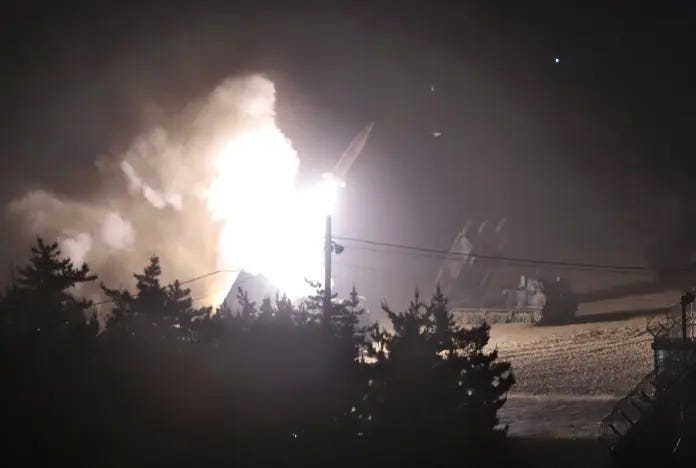How to Enable an Effective Future Ukrainian Deterrent
Deterrence strategies, offensive and defensive weapons, and the role of long-range strike capabilities
Picture: U.S. Army / Cody Harding
How should Ukraine shape its future deterrence strategy to prevent a follow-on war with Russia? Some may argue that it is premature to raise this question while the Russian invasion, which began in February 2022, continues with no end in sight.
While focusing on the current war is crucial, there are two reasons why thinking ahead is necessary. First, Ukraine cannot afford to focus solely on the present. Little would be gained by avoiding defeat now if it remains unprepared for a future confrontation with Russia.
Second, several analysts have already offered their views on what Ukraine needs to secure lasting peace. Not all these analyses are conceptually or empirically sound, making it important to challenge them where necessary.
A case in point is a recent article by Samuel Charap in Foreign Affairs, outlining a roadmap for a ceasefire and peace in Ukraine. This article addresses two interconnected arguments from Charap’s piece that are conceptually and empirically flawed: (1) that Ukraine should prioritize defensive over offensive capabilities to establish a “stable” deterrence relationship with Russia, and (2) that a stable deterrence relationship, one that minimizes escalation risks, is necessarily the best approach.
Deterrence Strategies
Conceptually, there are two issues with the argument that stable deterrence requires defensive capabilities and that Ukraine should therefore be equipped solely with defensive weapon systems.
First, deterrence strategies are inherently defensive by definition, as they aim to maintain a specific status quo—be it in alliance dynamics, territorial control, or the relative balance of power in a bilateral relationship.
Naturally, this definition says little about whether the status quo is just or how it was achieved. Moreover, an actor can defend a particular status quo with offensive ambitions in mind. In such cases, deterrence strategies act as a springboard for future offensive actions (e.g., Russia used Crimea, annexed in 2014 and defended until 2022, as a staging ground for its full-scale invasion in 2022). Nevertheless, deterrence remains a defensive strategy by definition, as it does not seek to revise the status quo.
Even if one accepts the notion of inherently offensive and defensive weapons—a categorization often and, in my view, rightly dismissed—this distinction should not matter if the goal is to enable Ukraine to pursue an effective deterrence strategy against Russia, which by definition will be defensively oriented. In other words, the classification of certain weapon systems as offensive or defensive should be irrelevant from a policy perspective as long as they contribute to deterring Russia.
Second, while Charap is correct to argue that some deterrence strategies are better than others, he and other analysts err in equating good deterrence strategies with those that minimize escalation risks, while deeming strategies that create such risks inherently bad. This categorization is overly simplistic.
Two Examples to Illustrate
First, consider the longstanding debate in the U.S., dating back to at least the 1960s, about abandoning a nuclear first-strike capability. Such a move could have significantly improved deterrence stability between the Soviet Union and the United States—or now between the U.S. and Russia—but would have come at the expense of U.S. allies, who have always viewed a credible first-strike capability as essential to their own interests and security. Without it, they would question the reliability of U.S. extended nuclear deterrence.
Second, consider how the West has prioritized the stability of NATO-Russia deterrence in its Ukraine policy since at least 2014. Undoubtedly, accommodating Russian demands and imposing only mild sanctions kept escalation risks relatively low. However, this approach led to a massive land war in Europe, which has already claimed tens of thousands of lives and poses an existential threat to Europe’s security and prosperity. In hindsight, this stability-oriented deterrence posture was far from ideal.
These considerations must also apply to Ukraine’s future. A stable Ukrainian deterrence posture is meaningless if it fails to achieve its primary purpose: deterring future Russian aggression.
Stability cannot, therefore, be seen as an end in itself. This does not mean Ukraine should be pushed into recklessness, but the right solution clearly lies somewhere in between. Proposed deterrence strategies that argue explicitly for stability at the expense of other factors are conceptually too one-dimensional to meet this demand and are likely unhelpful. As Thomas Schelling famously and correctly argued, there is stability in instability.





Very much agreed. Solid points, especially about the irrelevance of distinction between offensive/defensive weaponry to an effective Ukr. deterrent.